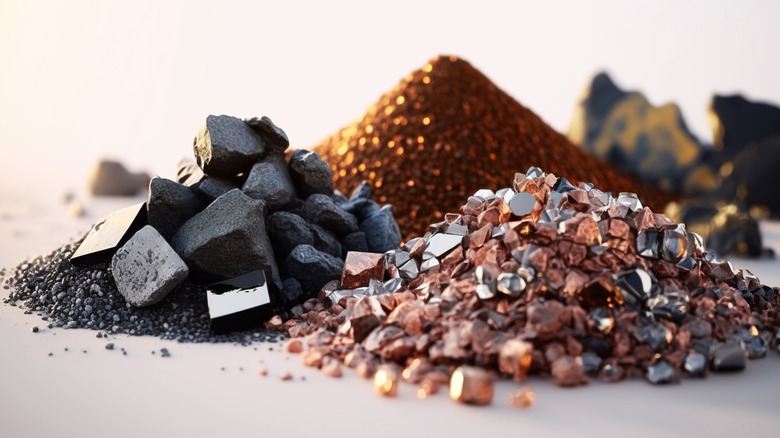China's Threat to Global Car Manufacturing - The Looming Crisis

The Global Impact of China's Rare Earth Dominance
China has taken a significant step in disrupting global car production by leveraging its near-total control over the supply of heavy rare earth elements. This move, which began on April 4, 2025, sent shockwaves through the automotive industry as it became clear that these critical minerals are essential for manufacturing new vehicles. Without access to rare earth elements, the production of cars—both traditional and electric—became nearly impossible.
These elements are not only vital for the automotive sector but also play a crucial role in other industries such as military contracting, semiconductor manufacturing, and aerospace engineering. The sudden restriction on the supply of rare earths quickly exposed the fragility of the auto industry’s just-in-time supply chains. Major automakers like Ford had to halt production at key facilities, including the Explorer SUV plant, while several European car manufacturers also faced shutdowns. The ripple effects were felt across the globe, highlighting the extent of reliance on these materials.
Although the restrictions were lifted in June 2025, the potential for future disruptions remains high, depending on how global trade tensions evolve. For electric vehicles (EVs), which require large quantities of rare earth elements, this dependence poses a significant risk. The automotive industry is now under pressure to find alternatives or reduce its reliance on these critical resources.
What Are Rare Earth Elements?
Rare earth elements are a group of 17 chemical elements, including the 15 lanthanides found on the periodic table (elements 57 through 71). These include Lanthanum, Cerium, Praseodymium, Neodymium, Promethium, Samarium, Europium, Gadolinium, Terbium, Dysprosium, Holmium, Erbium, Thulium, Ytterbium, and Lutetium. Additionally, Scandium (element 21) and Yttrium (element 39) are also classified as rare earth elements.
Despite their name, rare earth elements are not particularly rare in terms of abundance. However, they are typically found in low concentrations and are challenging to extract. Their unique properties make them indispensable in various technological applications, especially in the automotive industry.
Uses of Rare Earth Elements in Vehicles
Rare earth elements are integral to both internal combustion engine (ICE) and electric vehicle (EV) technologies. They are known for creating some of the strongest permanent magnets, which are used in various parts of a vehicle. For example, Terbium and Neodymium are used in motors for electric windows and air conditioning systems. Neodymium-based magnets are also found in power seats, audio speakers, and power steering systems.
In ICE and hybrid vehicles, Yttrium is used in spark plugs to extend their service life. Cerium is commonly used to polish car windows and remove wiper scratches from windshields. It also plays a role in catalytic converters to reduce emissions. Lanthanum is used in refining gasoline, while Samarium is incorporated into magnets for 'drive by wire' systems. Hybrid vehicles with NiMH batteries often use Cerium and Lanthanum in those batteries.
Without a steady supply of rare earth elements, the entire automotive industry would face severe challenges, regardless of whether the vehicles are powered by traditional engines or electricity.
The Challenge of Reducing Dependence on China
The United States currently lacks the infrastructure to process and refine rare earth elements domestically. This means that the U.S. is heavily reliant on China, which controls 69% of rare earth mining and 100% of refined rare earth elements. This dominance has contributed to China’s leadership in the EV market, as it can more easily secure the necessary materials for production.
Another major challenge is the environmental impact of processing rare earth elements. The extraction and refinement process involves mining, concentration, separation, purification, and integration into end products. This process requires significant energy and generates substantial waste, including radioactive materials and hazardous chemicals. In certain regions of China, where worker protections are minimal and toxic chemicals are used, the environmental and health consequences have been severe, leading to the identification of "cancer villages" near mining sites.
Despite these challenges, researchers are exploring alternative methods to mine rare earth elements more sustainably and develop technologies that reduce the need for these materials altogether. As the demand for EVs continues to grow, finding solutions to this dependency will become increasingly important.